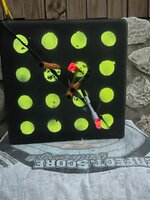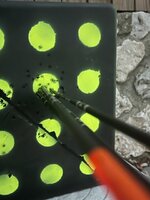bojangles808
WKR
thats good then you got good reapeatable form. i would probably just leave it or maybe try again on a diferent day and see if you shoot any different. youll be pulling your hair out basically for nothingI misspoke earlier, they are tail right. I did shoot a few and two hit right next to one another and the other slightly high. They were all pointing the same direction though.


